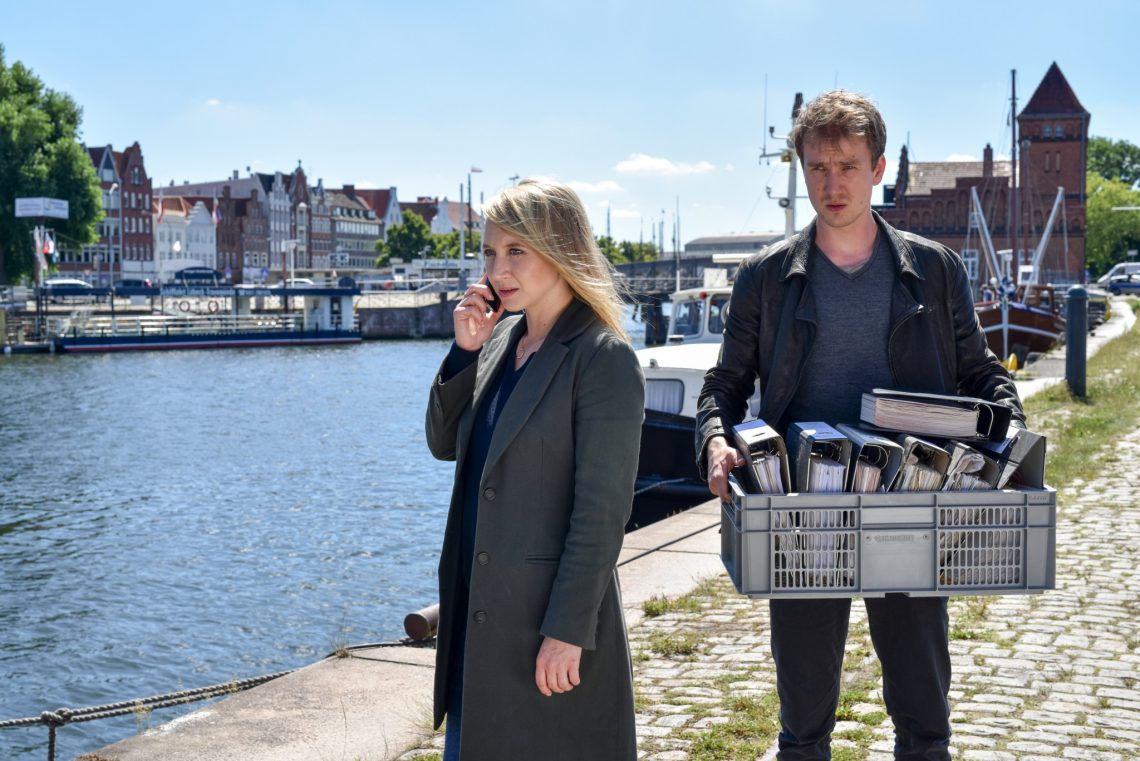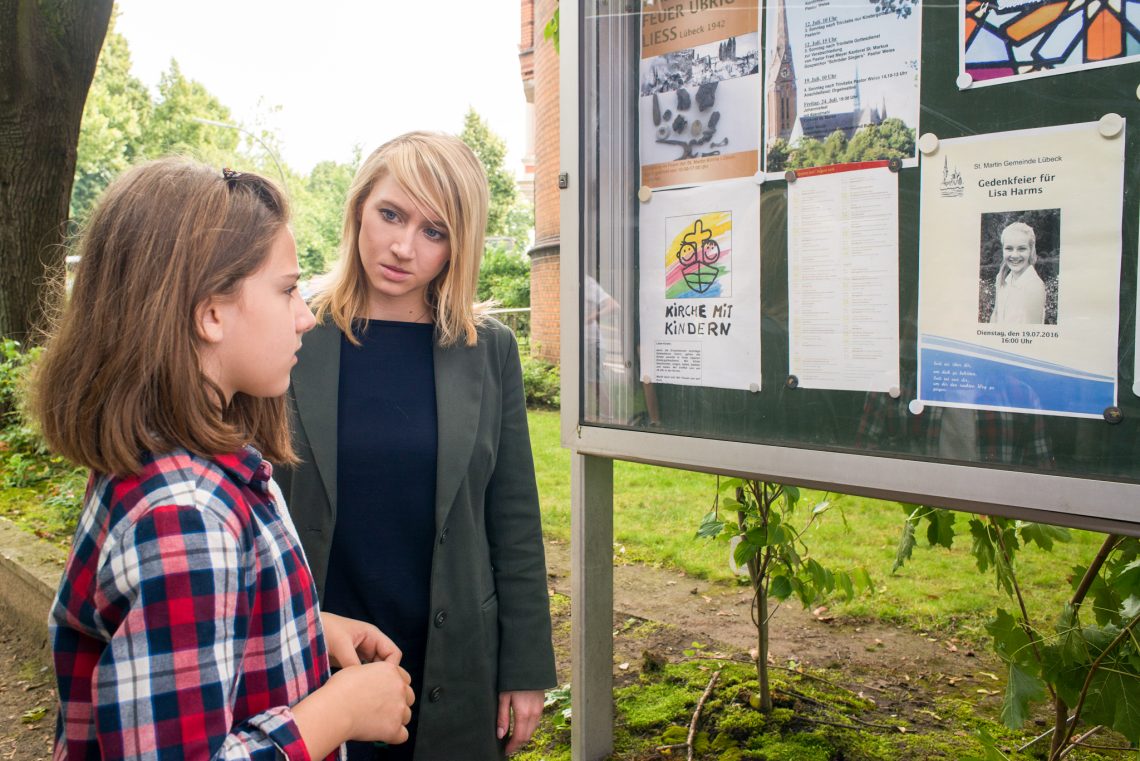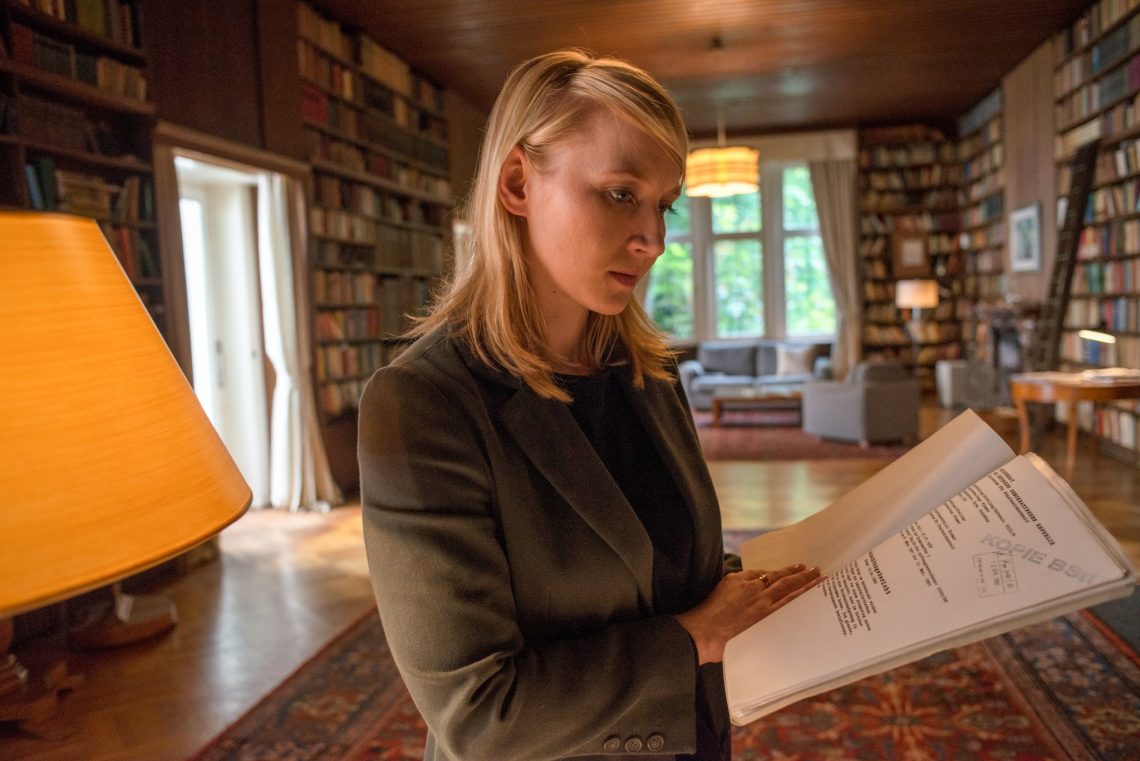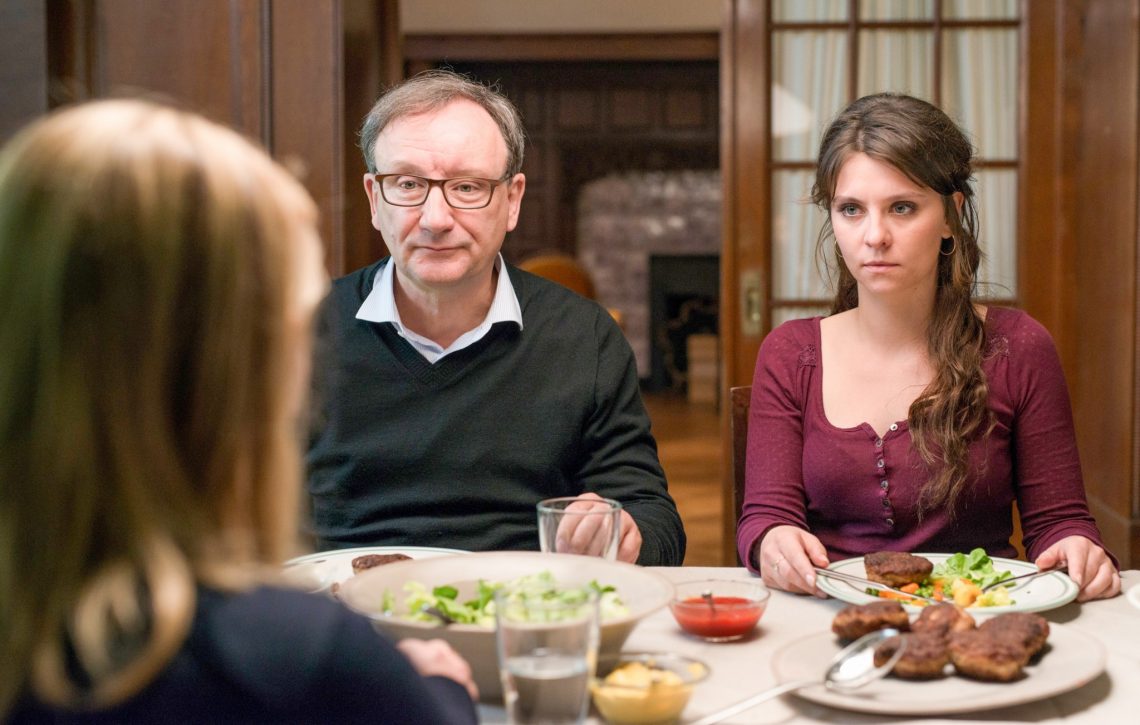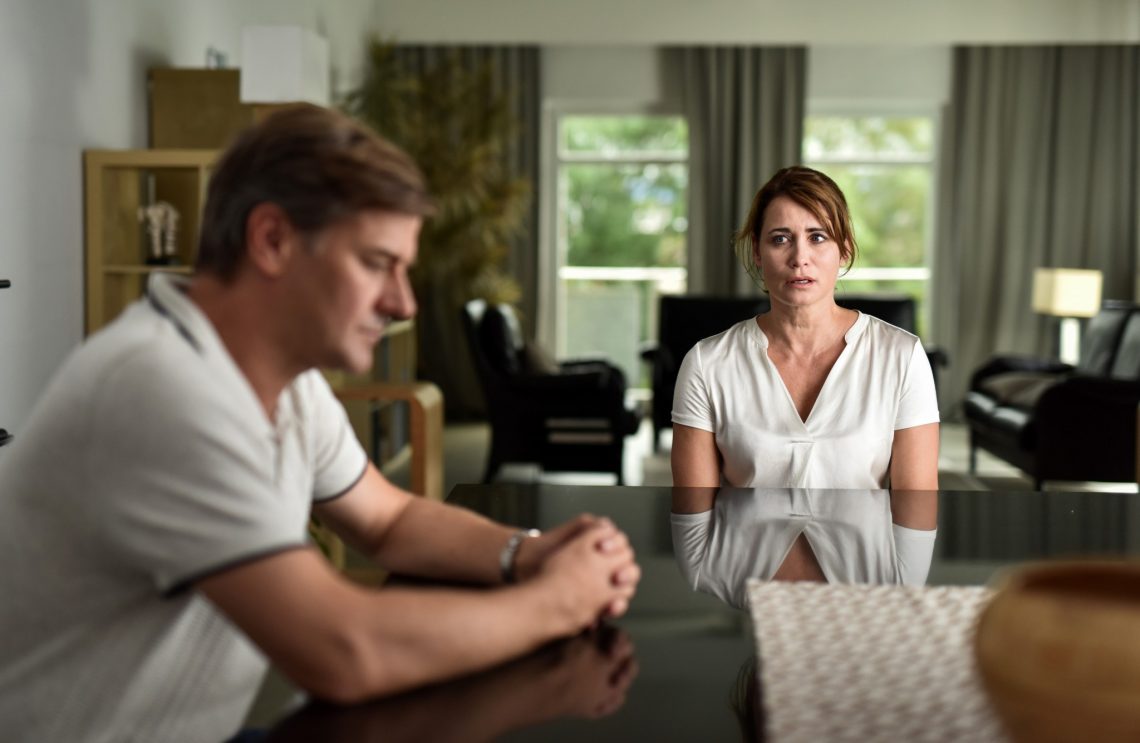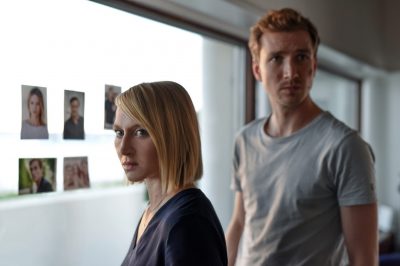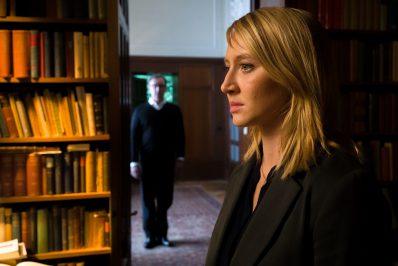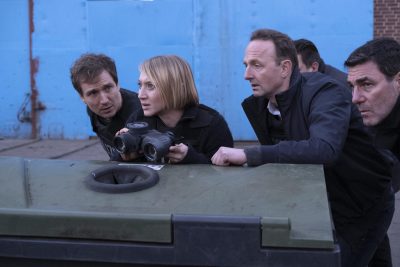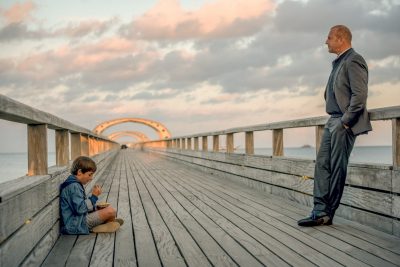- Runtime: 90
- Viewers: 7,4 Mio. / 19,8 MA
- Press release PDF
Two cases for Nora Weiss
Anna Maria Mühe is LKA target investigator Nora Weiss. A loner, she grew up in a pastor’s household in the GDR. When her mother died early, her father (Rainer Bock) gave her to friends in Latvia for a few months, which meant a double loss for her. Today, her relationship with her father is close but ambivalent. Nora Weiss investigates together with Inspector Simon Brandt (Jan Krauter) of the Lübeck homicide squad and her LKA supervisor Jan Geissler (Peter Jordan) in the Baltic Sea region.
Thomas Berger – one of Germany’s most successful directors – was recruited to direct the film, having directed the major successes “Die Flut ist pünktlich”, “Der Verlust” and the two-part “Tod eines Mädchens” for ZDF, among others (ratings of 7.18 million and 8.02 million). The screenplay for the first film was penned by the director in collaboration with author Mathias Klaschka (“Neben der Spur: Todeswunsch,” “Kommissarin Heller”). The second screenplay was written by Sören Hüper, Christian Prettin and Mathias Klaschka. The beauty of the Baltic Sea is repeatedly captured by expert Frank Küpper with his special camera work. The top-class cast around Anna Maria Mühe, Rainer Bock, Jan Krauter and Peter Jordan promises excellent crime entertainment. The two cases will be broadcast on ZDF on November 7 and 9, 2016. “Solo für Weiss” is a production of Network Movie, Hamburg. Producer: Jutta Lieck-Klenke. Producer: Anne-Lena Dwyer. ZDF’s editorial department is headed by Daniel Blum.
Content
The second case
In front of Nora’s (Anna Maria Mühe) house, of all places, the body of a Lübeck bus tour operator is found in a parked car. Did the perpetrator want to send her a message? Together with Inspector Simon Brandt (Jan Krauter) of the homicide squad, she investigates the surroundings of the murder victim, Thorsten Jensen.
A young Turkish employee of the murdered man, Murat Kaymaz (Emilio Sakraya Moutaoukkil), has been on the run since the night of the crime and threatens to abscond abroad. But the former bus driver Niels Franke (Rainer Piwek) is also increasingly becoming the target of the investigators. Finally, Nora finds evidence that Thorsten Jensen and Murat Kaymaz had more in common than a professional relationship – and that Jensen was involved in illegal activities with his bus tour company. The case seems to have much larger dimensions than first assumed. Simon and Nora eventually need the help of Nora’s superior Jan Geissler (Peter Jordan), with whom Nora has had repeated disputes and with whom she shares a secret passion.
Interview with Anna Maria Mühe
Impressive: You’ve played just about everything in your life, including an investigator in a ZDF crime thriller? What is it that makes the role of a TV detective so appealing to you personally?
Before “Solo für Weiss,” I had repeated inquiries in this direction, but the books and ideas never convinced me, and I always had the feeling that I had seen it all before. Nevertheless, it was a gamble for me to get involved in this as well. But when we shot the second case in the summer, I could really enjoy slipping into Nora Weiss again, in the same costumes, shooting in her beautiful house. I didn’t get tired of playing the same character again, on the contrary, I really liked the evolution and experimentation with the role.
Who is Nora Weiss?
Nora Weiss is a recluse who likes to leave her colleagues standing in mid-sentence. She always first settles everything with herself, which leads to complications both in her professional and private life. She is incredibly quick-witted, smart and likes the solitude in which she lives. She has a hard time letting others get close to her.
Do you watch a lot of crime shows on TV yourself?
Yes, very much so. The “Tatort” and Monday crime shows are among my standards.
You can currently be seen on ZDF in very, very different roles: “Familie!”, “Lotte Jäger” and now “Solo für Weiss”. One broadcast date follows the next. When such different projects are also shot at the same time, do you as an actress still see common themes or create connections at the end of a shooting period?
I’m fortunate in that I’m offered a wide variety of material and characters. Of course, that’s also what makes the profession at its best, the changeability. Because these three projects were so different, there were no connections, but that’s also the great joy in developing them. You don’t always have to invent the new wheel, even the subtle differences make it in the end.
The questions were asked by Claudia Maxelon
-
Drehbuch
Sören Hüper, Christian Prettin und Mathias Klaschka
Regie
Thomas Berger
Kamera
Frank Küpper
Szenenbild
Benedikt Herforth
Kostüm
Natascha Curtius-Noss
Musik
Florian Tessloff
Casting
Rebecca Gerling
Montage
Lucas Seeberger
Produktionsleitung
Andrea Bockelmann
Herstellungsleitung
Roger Daute
Producer
Anne-Lena Dwyer
Junior Producer
Astrid Bischoff
Produzenten
Jutta Lieck-Klenke
Produktion
Network Movie, Hamburg
Redaktion
Daniel Blum
Die Darsteller:
Anna Maria Mühe
Jan Krauter
Peter Jordan
Rainer Bock
Nataila Rudziewicz
Grace Serrano Zameza
Marcus Mittermeier
Anja Kling
Steffi Kühnert
Emilio Sakraya Moutaoukkil
Rainer Piwek
Bernhard Schütz
Hannes Hellmann
Rosmarie Röse
Aaron Karl
Liva Stege
Stephan A. Tölle
Heidrun Fiedler
Andreas Anke
Erich Krieg
u.a.
